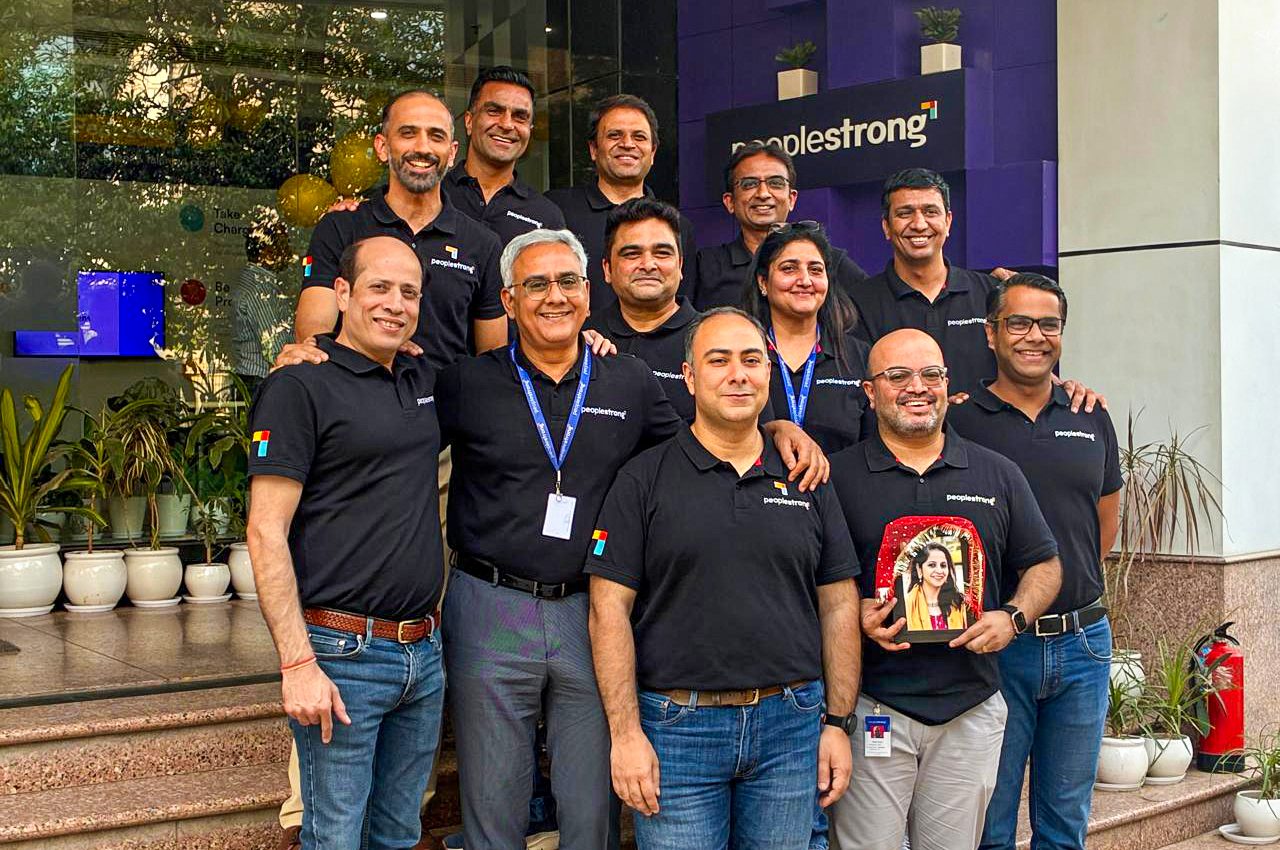Performance management is an important part of any business. In fact, according to a recent report, 95% of companies have a performance management process in place and those that don’t plan to implement it soon.
Yet, only about 20% of companies consider their process effective in achieving the desired goals, such as providing high-quality feedback and improving individual performance.
Clearly, there is a need to make the performance management process more effective across the board.
In this guide, we’ll give you tips and the information you need to design your performance management process effectively. Read on to learn more.
Suggested Read:
The Ultimate Guide to Performance Management for HR Leaders
What Is the Performance Management Process?
Performance management is an ongoing process that involves identifying employee performance goals, tracking and assessing their performance on these goals, and rewarding them.
Every organization should have a systematic performance management process to enable employees’ learning and growth.
Having a process in place helps align employee performance goals with the overarching business goals and encourages employee skill development.
Key Steps in the Performance Management Process
The employee performance management process has four key steps, though you can break these down into smaller steps if you like.
Let’s discuss these to understand how the process works.
1. Set Goals and Communicate Them to Employees
The first step in the performance management process is identifying employee’s training needs and setting goals.
These goals should align with the overall business goals and each employee’s career goals. That’s why it’s important to involve employees in the goal-setting process, but more on that later.
Also, you should set clear goals and expectations that are realistic and achievable within the given time frame, which is typically a year for most organizations.
Here’s a flowchart that explains the detailed performance goal-setting process. Follow this as-is or customize it as required:
2. Track Progress and Have Regular Check-Ins
Once you set the performance goals for the year, you need to regularly follow up and track progress on those goals.
Don’t rely on annual performance reviews and expect to see miraculous growth, as that’s not how things work. You need to stay in touch and have frequent check-ins to steer employees in the right direction and guide them on how to achieve their goals.
Remember, the purpose of these check-ins is to provide constructive feedback that helps people achieve their full potential and not to criticize.
Here are the characteristics of good, constructive feedback to clarify things for you.
Use this to improve performance reviews by providing helpful feedback that stirs people to action instead of demotivating them.
3. Evaluate Performance Periodically
Another crucial step in the performance management process is periodic performance reviews. Most companies conduct these annually, but you can also conduct them quarterly or bi-annually.
The idea is to assess how an employee has performed during the period and whether they achieved their targets.
During this process, team leaders and managers also assign performance ratings based on which rewards and incentives are awarded. A rating system also creates healthy competition in the workplace, as only the top performers get the best ratings.
4. Reward Good Performance
At this step, you reward top-performing employees based on the performance review and the ratings you assigned.
Rewards could be a promotion, a salary hike, a bonus, or anything else that motivates employees to keep performing well. Ensure that you publicly recognize high-performing employees to boost morale.
Lastly, the process should also include a plan for what to do with low performers. The most common policy is to put them on a performance improvement plan and give them another chance to prove their mettle.
Tips to Improve Your Performance Management Process
In this section, we’ll take you through some simple tactics to improve your performance management process. Let’s get started.
1. Involve Employees in the Process
One of the most crucial best practices you should follow is to involve employees in your performance management process. Don’t make it one-sided and force unrealistic performance targets on employees, as that will have an adverse effect.
Instead, ask them what their career goals are and what learning and growth targets they want to set for themselves. Not everyone would be interested in a vertical promotion, for instance. Some people may want a horizontal move to a different role that better matches their skills.
When you understand their career goals, you can set performance goals that align with their interests and ambitions, which makes the process more effective. When employees are on the same page as you, they’re likely to work harder toward achieving their goals.
2. Introduce 360-degree Feedback in Your Organization
360-degree feedback is the practice of seeking an employee’s feedback not just from their reporting managers but from everyone they work with. This includes their managers, colleagues, and subordinates.
This gives a more holistic overview of a person’s performance and is more in-depth than lateral feedback.
Moreover, it gives employees a chance to review their managers, making performance review a two-way process. The result: increased transparency and trust within the organization.
It is especially important to use this when reviewing the performance of those in positions of power. By seeking feedback from their team you ensure that they’re held accountable if they follow any unethical management practices.
By asking specific questions, you can assess an employee’s performance on various parameters, such as leadership skills or behavioral competencies.
PeopleStrong’s performance management solution allows you to create detailed questionnaires and collect 360-degree feedback. Here’s a sample.
3. Invest in Good Performance Management Software
Lastly, use modern performance management platforms to streamline and improve your performance management process.
Performance management software solutions like PeopleStrong help you with all steps of the process, from goal setting to performance evaluation.
Here are some things it can help you with:
- Configure various performance management frameworks, such as OKRs and MBO, to use the one that best suits your organizational needs
- Create individual and team goals and easily share them with the concerned people on any device
- Choose from 360-degree and one-on-one performance review processes and implement them without hassle
- Keep track of reviews and ratings for each employee and maintain transparent records
Here’s a glance at PeopleStrong’s dashboard, where you can track employee performance ratings:
Need more proof?
Consider this case study detailing how Cholamandalam, an Indian finance company, utilized PeopleStrong to streamline its performance management process.
With the help of PeopleStrong’s Performance module, it was able to complete performance reviews for over 10k employees in just 30 days. Moreover, 87% of employees and managers agreed with the ratings computed by the system.
Ready to Take Employee Performance to the Next Level?
Having a well-defined performance management process is crucial to your business success as it helps you effectively improve employee performance and skills.
Use this guide to create a transparent, fair process that motivates employees to perform better.
Don’t forget to invest in a good performance management software solution to manage the entire process with ease. PeopleStrong offers a robust suite of features to make employee performance management a breeze. Try it today!
FAQ
Why is performance management important?
Upskilling employees and training them to take on more responsibilities and perform better is a key goal for any organization. Performance management allows you to better structure your employee training initiatives by providing clear goals and rewards.
It also aligns individual and team performance goals with the business goals, ensuring everyone is growing in the right direction.
Lastly, having a structured performance management process tells employees that you care about their career growth and skill development. This motivates them to perform better and reap the rewards that come with great performance.
What are the 4 Ps of performance management?
The four Ps of performance management are:
- Priorities: Set clear goals for performance management and prioritize the most important ones instead of trying to achieve too much.
- People: To make the goal-setting process more efficient, include the employees in it and ask for their goals and preferences.
- Processes: Set a well-defined and structured performance management process to ensure everyone is on the same page.
- Practices: To get the best results, follow good performance management practices, such as transparency and fairness.
What is the performance management process?
The performance management process involves setting work-related goals for employees and teams and rewarding them based on their performance.
It starts with setting key performance goals, which should align with an individual’s career goals and the business’s strategic goals. Then, managers and team leaders track their team’s performance and have regular check-ins with team members to review their performance and provide feedback.
At the end of the year, they review employees’ annual performance and assign performance ratings. Based on these, employees are either rewarded and promoted or put on a performance improvement plan.
Unlock the full potential of your performance management process with PeopleStrong's revolutionary solutions. Our team of experts is dedicated to helping you create a culture of continuous feedback and development, ensuring your organization stays ahead of the competition. Contact us today and discover how PeopleStrong can transform your performance management process into a more efficient, effective, and rewarding experience.
Contact Us Now












